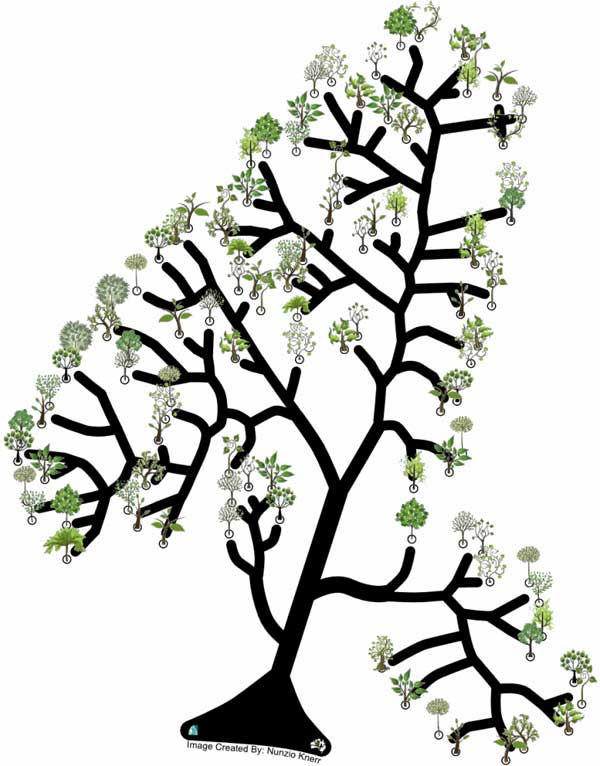The Acacia Tree of Trees
Sept – Oct 2010
Mimosoideae Research Program | CANBR | Gardens 40th Birthday activities |
Acacia, the wattles, is the largest genus of plants in Australia with over 1,000 taxa distributed from tropical rainforests to the semi-arid regions. A large scale investigation of the evolutionary relationships of Acacia is underway at the Centre for Australian National Biodiversity Research (CANBR) , which is a joint research venture between the Australian National Botanic Gardens (ANBG) and CSIRO Plant Industry . The goal of this long-term project is use DNA sequence data to understand the evolutionary history of the genus, that is determine which species are closely related to each other and share a recent common ancestor. With this knowledge we can infer the changes in plant architecture, leaf form and biogeographic distribution of species over time. This evolutionary information can then be used to inform and improve management decisions in plant conservation and revegetation programs.
We commonly represent these DNA sequence data as a 'Phylogenetic Tree', basically a branching diagram, similar to a family tree, with closely related species connected by short branches and more distantly related species connected by long branches. This 'Tree of Trees' project currently running at the Australian National Botanic Gardens (ANBG) displays over 100 species of Acacia trees (and shrubs) in the shape of a ‘phylogenetic’ tree with live potted plants representing the species and mulched paths marking the branches between species. The closer one species is to another on the tree, the more closely related the two species are. The display indicates the enormous diversity of related Acacias, as quite often two very different looking species can actually be closely related.

 At the display you can start at the base of the tree and walk up the tanbark trunk and then venture out on a limb. Each plant is labelled with a species profile. There are also 12 interpretation signs in the display that help describe the work and note interesting lineages of Acacia. Also at the display are 4 species which are unlabeled and you can test your identification skills by finding them in the display.
At the display you can start at the base of the tree and walk up the tanbark trunk and then venture out on a limb. Each plant is labelled with a species profile. There are also 12 interpretation signs in the display that help describe the work and note interesting lineages of Acacia. Also at the display are 4 species which are unlabeled and you can test your identification skills by finding them in the display.
This tree only represents 100 or 10% of the 1000 Acacia species so your favourite wattle may not be on display this year. Over time we hope to include all species in this online presentation. This work is led by Dr Joe Miller of the Centre for Australian National Biodiversity Research. His team that helped generate the phylogenetic tree include Cathy Miller, Ish Sharma and Kristy Lam of the CANBR. The display was made possible by the effort of dozens of CANBR and ANBG staff, especially Nunzio Knerr who reformatted a regular phylogenetic tree into the display you see.
![Director of National Parks [logo]](../../../../images/dnp_90px.gif)






